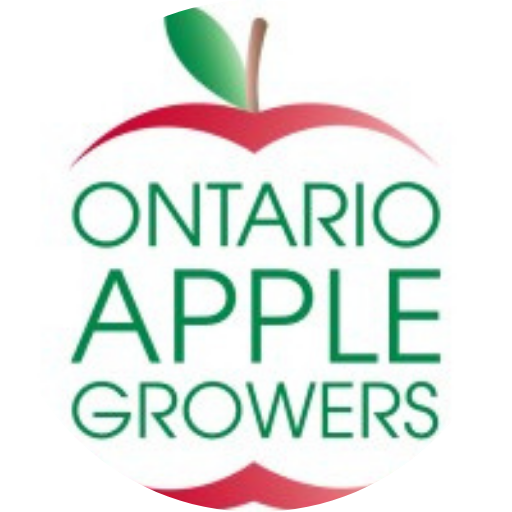One of the most common reasons we hear from our customers on why they are seeking farm management software is to help them with audits. In the fresh produce industry, an audit is essentially a pass/fail examination of a farm or packinghouse's written plan and the physical evidence that the plan is being consistently implemented to ensure safe and compliant products.
The proliferation of audit and reporting demands in recent years has forced some growers and fresh produce packers to an administrative breaking point. As consumers, trading partners and governments call for more certifications from growers, the burden of form filling and desk work is adding hours of work on top of the real work of growing quality produce. This has led to a real crisis of ‘audit and decision fatigue’ among farm owners and managers. Real consequences to long term and short term decision making and problem solving arise when growers do not have the time, data and capacity.
For many growers, this relentless requirement for verification has led to a state of systemic exhaustion. Audit fatigue not only imposes crippling administrative costs but, paradoxically, risks undermining the very goals of transparency and genuine operational improvement it seeks to achieve. To better support our growers in reducing their administrative burden for our growers, we have outlined the major audit and reporting demands and some strategies for easing the paperwork load.
Fresh produce audit landscape
Audits are a systematic, independent, and documented process for obtaining evidence and objectively evaluating that evidence to determine the extent to which a grower, packer, or facility's food safety, quality, or other operational systems comply with a set of pre-determined standards. The standards for which audits are based generally fall into a few categories:
- Food safety audits
- Traceability and recall audits
- Chemical and pesticide usage audits
- Regulatory / government inspections
- Social and environmental audits

Food safety audits
These are the most common and often mandatory, driven by buyer requirements, industry standards, and government regulations (like the FDA's Food Safety Modernization Act - FSMA).
- Good Agricultural Practices (GAPs) & Good Handling Practices (GHPs):
These voluntary, third-party audits verify that on-farm production, harvesting, and post-harvest handling minimize the risk of microbial food safety hazards.- Scope Includes:
- Water quality (irrigation, post-harvest water)
- Worker health and hygiene
- Soil amendments (e.g., manure handling and composting)
- Field and facility sanitation
- Equipment cleaning
- Scope Includes:
- GFSI benchmarked audits:
Many major retailers and food service companies require certification against one of the Global Food Safety Initiative (GFSI) recognized standards, which are comprehensive food safety management systems.- Examples: Safe Quality Food (SQF), GlobalG.A.P., PrimusGFS, BRCGS
- Scope is very broad and often includes all GAPs/GHPs, plus:
- Hazard Analysis and Critical Control Points (HACCP) or Preventive Controls (PC)
- Facility design and maintenance
- Pest control programs
- Food defense (preventing intentional contamination)
Traceability and recall audits
These audits focus specifically on the systems used to track product flow, which are critical for quick response to food safety issues.
- Product traceability:
Auditors perform a "mock recall" or "vertical trace" to verify the ability to track product one step back to the source (field/grower) and one step forward to the immediate customer (e.g., retailer or distributor).- Key components checked: Lot code assignment, accurate records for harvest date, field ID, packing date, and customer shipping records
- “Mock recall” / recall program action plan verification:
Being able to trace forward and back is just the start of the process when a recall is issued. Growers and packers must ensure a written, practiced plan is in place to quickly and effectively remove affected products from the supply chain.
Chemical and pesticide usage audits
These focus on the safe and legal application of agricultural chemicals.
- Agricultural Chemical/Pesticide Use:
Audits check that chemicals are used according to label and MSDS instructions, local regulations, and established Good Agricultural Practices.- Scope Includes:
- Chemical storage and security
- Application records (who, what, where, when -with label specifications followed)
- Worker training on safe handling (eg. WHIMIS in Canada or OSHA in the US)
- Verification of proper pre-harvest intervals (PHI) to ensure no illegal residues
- Scope Includes:
- Residue Testing Programs:
Verification that growers have programs in place to monitor and test for pesticide residues, often required by buyers.

Regulatory / government inspections
These are non-voluntary inspections conducted by regulatory agencies, rather than third-party certification bodies. We have outlined the governmental agencies in North America responsible for fresh produce inspections and auditing.
| Country | Agency | Areas of inspection / audits |
|---|---|---|
| United States | U.S. Department of Agriculture (USDA) - Agricultural Marketing Service (AMS) | Shipping Points / Receiving Markets: Responsible for establishing quality and grade standards (e.g., U.S. Grade No. 1) and providing third-party inspection/audit services at shipping points (production/packing facilities) and receiving markets (terminal markets, distribution centers, border crossings). This is often done in cooperation with State Departments of Agriculture. |
| United States | Food and Drug Administration (FDA) | Production Plants / Distribution Centers / Borders: Focuses on food safety standards, particularly under the Food Safety Modernization Act (FSMA). Inspections/audits occur at production/packing facilities, warehouses, distribution centers, and borders for imported produce. |
| United States | USDA - Animal and Plant Health Inspection Service (APHIS) | Borders / Ports of Entry: Primarily focuses on safeguarding U.S. agriculture from plant pests and diseases. Inspections occur at borders and ports of entry for imported and exported produce to ensure plant health requirements are met. |
| Canada | Canadian Food Inspection Agency (CFIA) | Production Plants / Distribution Centers / Borders: This is Canada's primary agency for food safety, plant health, and grade/quality standards. Inspections and enforcement cover domestic food businesses, including production and processing facilities, and imported food at borders and ports of entry. They also provide destination inspection service to resolve buyer-seller disputes over quality. |
| Mexico | Servicio Nacional de Sanidad, Inocuidad y Calidad Agroalimentaria (SENASICA) | Production Plants / Borders / Verification & Inspection Points (VIPs): Mexico's counterpart to APHIS and CFIA's plant health division. It focuses on plant health (phytosanitary requirements) and food safety. Inspections take place at production sites and at designated Verification and Inspection Points (VIPs), which are located both on the Mexican and sometimes the U.S. side of the border for products crossing into Mexico. |
| Mexico | Comisión Federal para la Protección contra Riesgos Sanitarios (COFEPRIS) | Production Plants / Distribution: The primary agency for food safety and regulatory oversight of products for human consumption, similar to the FDA's role in food safety. Inspections and vigilance occur at production and processing facilities and along the supply chain. |
Social and Environmental Audits
As market demands expand beyond food safety, growers and packers are increasingly facing audits covering their corporate social and environmental responsibility.
- Labor/Social Responsibility:
Audits of worker welfare, compensation, working conditions, and ethical sourcing practices. - Environmental/Sustainability Audits:
Focus on responsible practices, such as water and energy use, waste management, carbon reporting, and biodiversity protection. - Organic Certification:
A specific audit for farms and facilities claiming organic status, verifying compliance with a country's organic standards (e.g., USDA Organic, Canada Organic).
(To learn more about some of the popular voluntary certification processes for fresh produce, check out our certification resource page section on them here.)

Strategies and tools for relieving audit pressure
Digitize!
Manual, paper-based record-keeping inherently creates administrative drag. When auditors charge up to $115 an hour plus service fees for verification services, the time spent searching for misplaced or incomplete paper documentation translates directly into high, non-productive costs. Audit preparation time is heavily consumed by the process of finding evidence.
Digitizing data recording in real time, as the action happens, will immediately eliminate hours spent on centralized data collection and entry. When field supervisors can record worker tasks and create inventory as it happens, accurate payroll and traceability for recall audits and supplier data sharing become an integral part of the workflow, rather than an added step. Digital spray records that include tank mix calculations and timestamps significantly improve both chemical use and worker safety audits. Therefore, choosing Farm Management Software (FMS) that supports mobile and offline data capture is vital for maintaining up-to-date record keeping.
Staff training for data hygiene
The necessity of staff training is not merely an operational suggestion; it is a regulatory requirement under legislation like the FSMA Produce Safety Rule. The rule mandates that employees receive training related to all safe food production, harvest, and post-harvest handling practices. This is also an opportunity for growers to integrate digital data literacy training for their employees as well.
Growers who incorporate training for their staff on using a FMS during their regular workflows will benefit enormously from removing the need to record all this data at the end of the day/ week/ month. Working with staff to ensure the proper use of mobile data capture tools; an understanding of data lines of accountability (e.g., who needs to see what data and when); and the critical importance of real-time input; will empower everyone with the data they need to properly execute their regular roles and adapt to new challenges as they arise.
Data integrations
FMS tools that can integrate with your other farm systems will give your data collection processes for audits an even bigger boost. Some FMS platforms offer API integrations so that data can be pushed or pulled from other systems automatically, saving valuable administrative time entering and aligning data. Letting machines talk to each other will greatly speed up real time data capture and enable reporting that combines data from multiple sources.
For example, integrating FMS inventory data with real time storage room monitoring systems, like Croptracker has built for Tregunno Farms, means there is no time lost manually recording inventory movement in and out of cold storage. Inventory location records are updated automatically using RFID tag monitoring, maintaining a real-time inventory traceability record at all times.
Industry harmonization and interoperability
Many of the standards and certifications we outline in the first section have overlapping metrics and reporting requirements. This has prompted many in the industry to call for more standardization so data does not need to be reformatted or double entered to satisfy multiple audits. While individual farms can take internal steps, systemic change requires market-wide alignment.
Buyers, retailers, and regulatory bodies must aggressively accelerate the adoption of unified, metrics-first assurance frameworks, such as the CPMA’s call to standardize environmental reporting. This will significantly reduce the duplication of effort caused by contradictory standards, lowering the collective cost of compliance and allowing growers to focus limited resources on genuine outcome improvement.
Indeed, some of this advocacy is already taking effect. CFIA recently released an update to their ‘Red Tape Reduction’ product to ease the regulatory burden on fresh produce growers. The EU Commission has also announced an effort to address friction in redundant food safety regulations.
Industry level adoption support
Governments and industry associations must continue to expand financial assistance programs, grants, and incentives to help specialty crop growers overcome the significant capital investment required for adopting integrated digital documentation and precision agriculture technologies. The USDA, for example, has a program to support growers in the GAP auditing processes.
Growing associations and co-ops can also support their growers through organizing data digitization for their members. For example, the Ontario Apple Growers have decided to support their members though an association level account with Croptracker. All members of the OAG have access to Croptracker’s FMS, not only benefitting their own individual orchards, but directly supporting data interoperability between smaller growers and packing houses.

Croptracker’s goal is to help growers ease this burden and reduce audit fatigue. As the harvest season is coming to an end near our head offices, we have started to work with many of our North American growers on their end of season data collection and report generation. For our long-time users, this process has become routine – their favourite formatted reports are bookmarked and ready to be generated on demand when their admin teams and auditors come knocking. For growers finishing their first season, the hard work of ensuring proper worker software training and data gathering is paying off as they start to realize just how much admin time they will be saving for end of season reporting.
By establishing a culture of real-time, data-driven documentation, the fresh produce industry can help reduce audit fatigue, transforming compliance from a resource drain into a foundational element of operational efficiency, profitability, and long-term business resilience. The pathway to greater assurance is paved not with more office time and audit prep, but with integrated data collection through your all growing processes. Book a demo or reach out to support@croptracker.com to learn more about reducing audit and decision fatigue.





